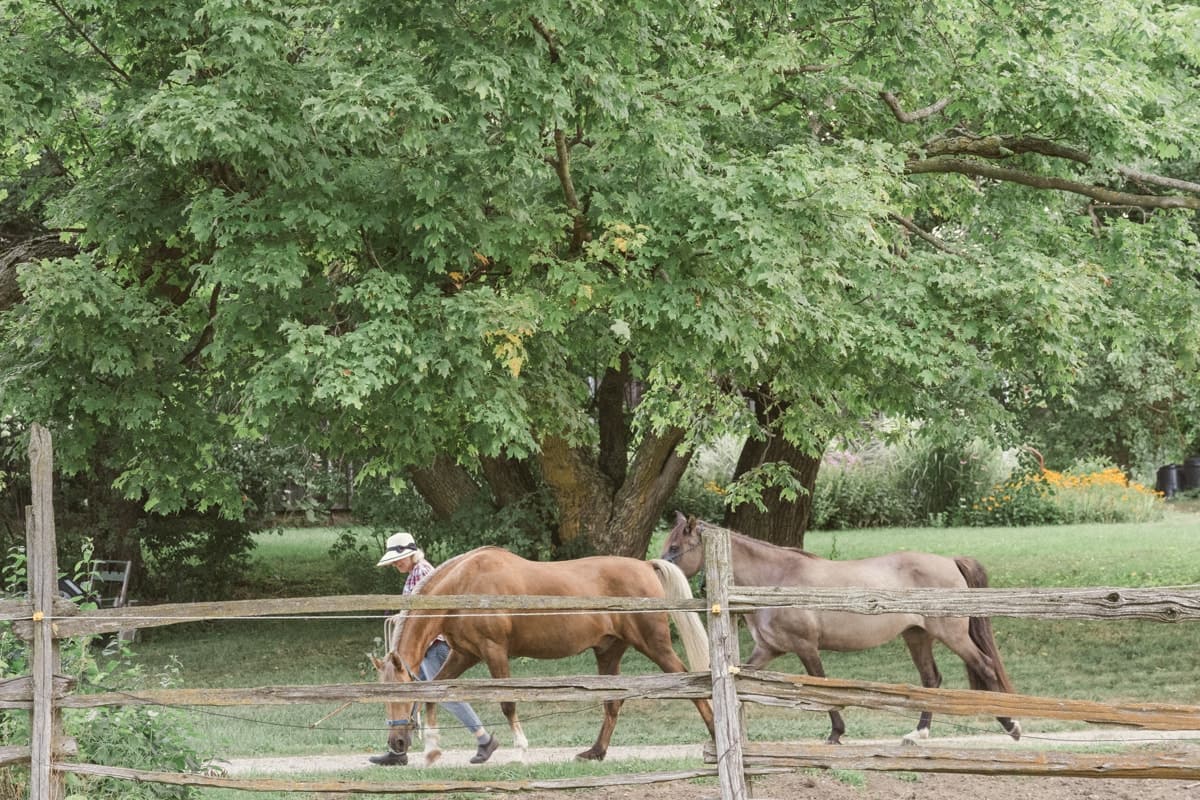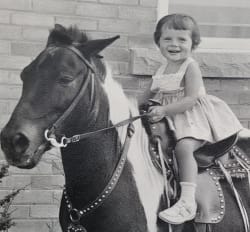Our Story
When we take control of one of these lives, when we say, I will be responsible for this animal, his care and feeding, his health and happiness, we tacitly promise to give him the very best care that we can. To learn everything we can about the horse, and how to give him the longest and very best life possible. Not the life we’d like, but the life we know is right because we studied it and are certain.”
Joe Camp, The Soul of a Horse
 A Wish
A Wish
When I was growing up, my family would often visit Edwards Gardens in Toronto to take a walk through nature in the city. My sister and I rushed to our favourite place, the wishing well, so we could make our wishes. Mine was always the same. “I wish for a million horses.”
An Opportunity
Fast forward to 2009 when I started a horse stable sitting service, which gave me the opportunity to work at over 30 farms of all sizes. One of the things I noticed was how differently people managed their hay feeding routines and how much hay could be wasted. When I was ready to open my own small stable, I used the original OptiMizer to conserve hay and make feeding efficient. I used them for years and appreciated that the OptiMizer



kept hay off the ground, significantly reducing waste
held a day’s worth of hay so our horses had access to forage
allowed our horses to safely and more naturally eat together
Light Bulb Moment
Over time, issues for our “easy-keeper” horses encouraged me to try slow feed hay nets. I started to use them around the paddocks and in the stalls. The hay nets were okay for slow feeding, but they were very time consuming to refill and wasted a lot of hay. In contrast, the OptiMizers were so quick and easy to fill and virtually no hay was wasted on the ground. In 2018, I approached the designer of the original OptiMizer to see if we could develop a version of the
product to enable slow feeding. We worked together and a new OptiMizer was developed, prototypes produced, and I started using them with my horses. It was immediately obvious that this product was really good, so I retired from my
day job in the healthcare industry to follow my passion.

From Wish to Reality
The new OptiMizer was launched in November 2019 at the Royal Agricultural Winter Fair in Toronto. Over the next few years, paddock OptiMizers were sold throughout North America, and now thousands of horses are safely having their hay optimized. Satisfied customers asked if we could manufacture a version of the OptiMizer for horses in their stalls. The OptiMizer InStall was developed, tested, and commercialized in 2023.
Over the past 5 years, I have visited with hundreds of customers at farms all across America. I have observed so many awesome care practices in different regions. This learning enables us to continuously innovate and improve our products and services.
My company is the exclusive manufacturer of OptiMizer hay feeders. My company is called Wishing Well Services because I truly wish that all horses will receive optimal care. Always making forage available in a natural, slow grazing fashion is a foundational aspect of excellent care. This is what the OptiMizer is all about. And here we are now, producing OptiMizers each day to make them available for “a million horses.”
Sometimes, wishes do come true.
Sue Wilson
Owner & Innovator
 A Wish
A Wish